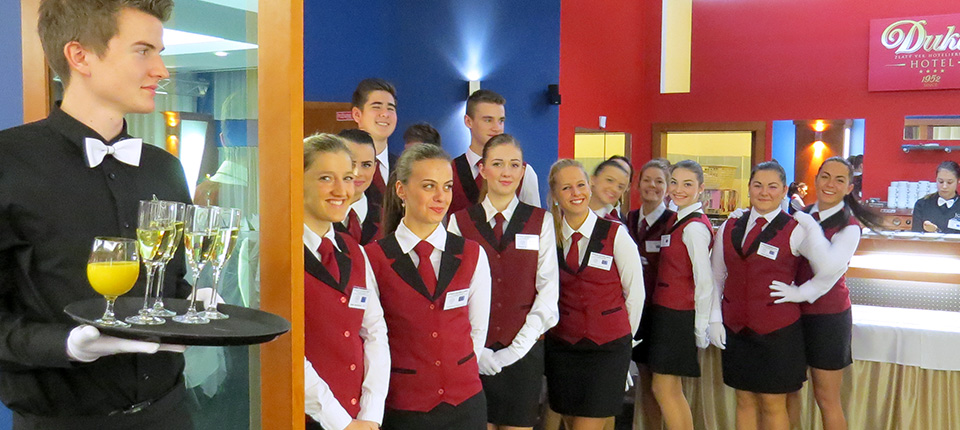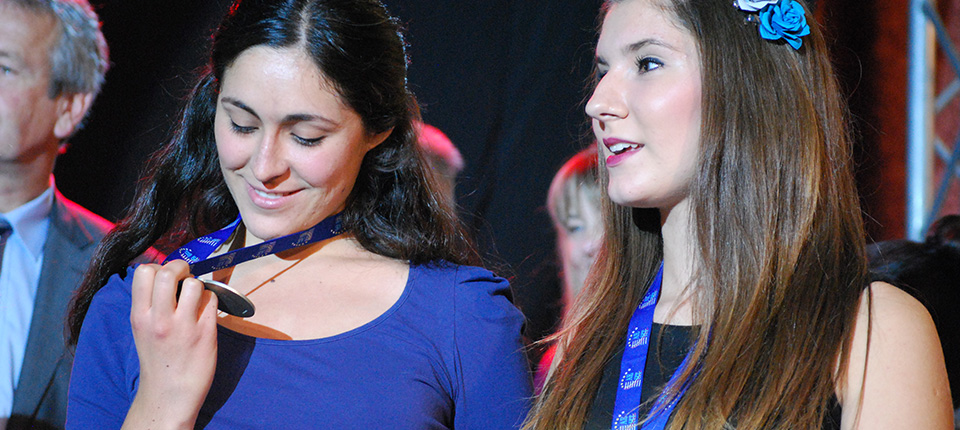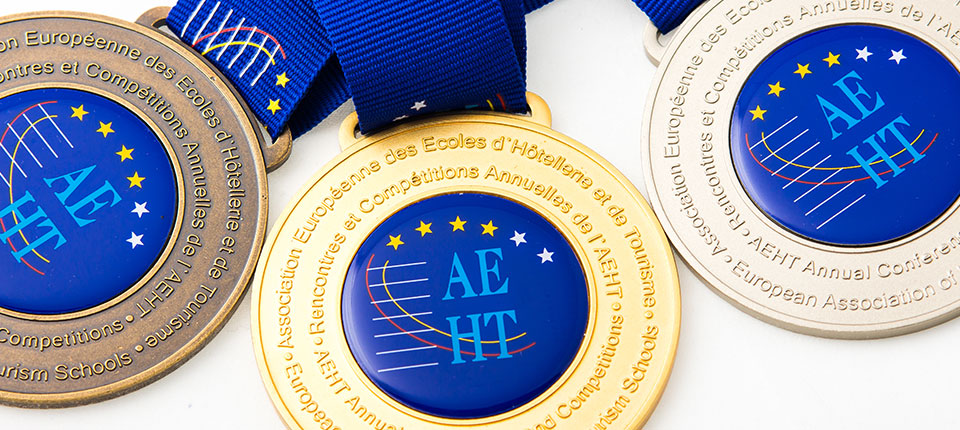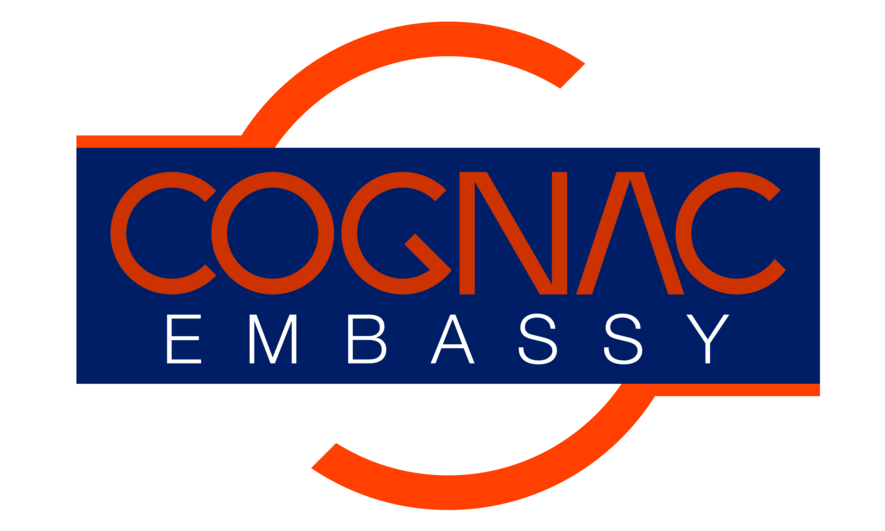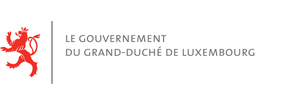Each summer the AEHT Presidium holds a meeting to finalise the programme of ctivities for the coming academic year; usually we are invited by one of our members, and this year our invitation came from the Madeira Hotel and Tourism School. And what a stroke of luck: the Presidium meeting coincided with the AEHT seminar on the secrets of Madeira wines!
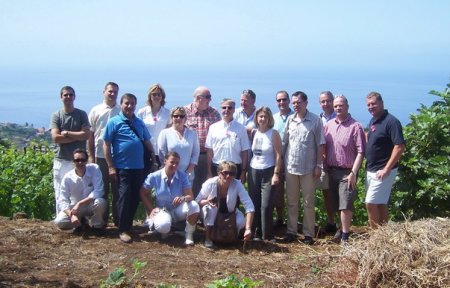
Participants in the seminar on the secrets of the wines of Madeira
Madeira, an autonomous region of Portugal, owes its name to the dense forests which covered the island when it was discovered in 1419 (madeira means 'wood' in Portuguese). Madeira is 57 kms long and 22 kms wide, with a population of 250,000, 45% of them living in the capital Funchal, which hasexpanded over the last few years, not so much because of the large number of tourists, but because of rural exodus. Around one million inhabitants have emigrated, half of them to South Africa, half to Latin America. Madeira plays host to tourists who come mainly from the Scandinavian countries, from Germany and from England.
In geological terms, the Ribeira Brava and São Vicente valleys divide the island into two parts, the west being of more recent formation than the east. In Madeira the vegetation has the advantage of a very rich, acidic volcanic soil and a mild climate throughout the year. These excellent growing conditions are further enhanced by a highly efficient network of irrigation canals (levadas), some of them dating back to the mid 15th century: these levadas serve to bring the water from the island’s north-western slopes where the rainfall is heavier and to distribute it to several estates on the south eastern side. Because of the mountainous terrain, agriculture and wine production take place on terraced slopes (called poios) and remain largely manual.
|
|
|
|
Agriculture on a terraced slope
|
Levadas
|
Banana tree
|
The idea of organising a seminar on the secrets of Madeira wines came from the Escola
Profissional de Hotelaria e Turismo da Madeira, which last year celebrated the 40th anniversary of its foundation. This modern school currently has 300 students, and as its name implies, it provides training in the fields of hotel, restaurant and tourism businesses. The school and its training hotel are housed in recently built premises which would be the envy of many of our members. The Hotel Escola right next to the school boasts a splendid sea view and is the ideal place for a few days of complete tranquillity.
|
|
|
The Training Hotel
|
The EPHTM School
|
The seminar began with a guided tour of the town of Funchal (its name derives from the fennel – funcho in Portuguese - which grew abundantly here when the colonisers arrived) which was already bustling with preparations for the Feast of St Peter, the patron saint of fishermen. We stopped to admire the Sé, the gothic-romanesque cathedral dating from the end of the 15th century (1493 – 1517), a national monument and Portugal’s first overseas cathedral with its own bishop. Opposite the cathedral is the monument commemorating the visit by John Paul II, the only pope who has visited the island.
|
|
|
|
The Sé
|
The Patricio and Gouveia embroidery workshop
|
Next there was a visit to the ‘Patricio e Gouveia’ traditional embroidery workshop, the oldest on the island, located in the centre of Funchal, close to the covered market. Even today women continue to produce by hand all kinds of decorative articles. Our delegates had the opportunity to follow the entire production process, from the design, printing the designs on the cloth and then work on the product itself. The workshop will produce embroidery according to clients’ individual requests, and many articles are for export. The municipal market was also well worth a visit because of the wide variety of regional fish, fruit and vegetables on sale.
 |
|
|
Fruit and vegetable market
|
Fish market
|
At midday our delegation made its way to the São Tiago Fortress for a traditional lunch: this 17th century bastion was built to protect the local population from attacks from pirates, and today it houses a most interesting museum of modern art.
|
|
|
Watch-tower in the São Tiago Fortress
|
Seminar participants
|
The high point of our stay was discovering the Madeira wine-making techniques at the Madeira Wine Company S.A. Wine-making on the island dates back to the first people to colonise the island, who belonged to the Portuguese nobility, including many merchants. For the merchants, the island was a staging post on the routes towards other major export markets, and so was an unexpected windfall. They brought from the continent (probably from the Minho region in northwest Portugal) various varieties of vine which are now grown on Madeira. Navigators’ reports show that 25 years after the island was colonised exports of wine from Madeira had already begun, and these exports increased when Christopher Columbus ‘discovered’ America. In the 18th century Madeira wine became the preferred tipple of kings, emperors and heads of state. We should remember that exports of Madeira wine were greatly influenced by wars in Europe and in the United States, which put competing suppliers out of action (for example during the Napoleonic wars in the 19th Century when French and Spanish ports remained closed and only Portugal could continue to provide wines for the United Kingdom) or reduced consumption in certain countries (such as during the civil war in North America). From the 17th century onwards there was a considerable increase in exports to the East Indies via the Cape of Good Hope (the Suez Canal had not yet been built), and people noticed that the wine improved after its journey through the tropics because of the great temperature variations and because of the moist sea air. In the mid eighteenth century this discovery led to the introduction of a new procedure of heating the wine (a practice known as estufagem) which is still in use today.
These days Madeira wines are exported to all EU countries (especially to France, the United Kingdom and Germany) as well as to Japan, Canada and the United States. An engineer at the production unit we visited revealed to us some of the secrets which explain the very special taste of this wine, produced only in Madeira: the composition of the volcanic soil, the local sourcing of the essential raw materials (grapes, cane sugar …), proximity to the sea, climatic conditions as well as the unique production process (manual tending of the vines and grape harvest because of the terraced vineyards, dosing, fermentation and warming techniques …). Madeira wines are fortified wines in which the fermentation is interrupted by the addition of 96% proof grape alcohol so as to conserve the residual sugars. Four different types of wines may be made by this process: Dry, Medium Dry, Medium Sweet and Sweet (also called ‘Rich’).
|
|
|
Sercial 1910, Dry
|
Bual, Medium Sweet
|
Madeira may be served both as an apéritif (usually drunk chilled) or as an after-dinner drink (at room temperature). Once they have been fortified the wines undergo one the following heating procedures: ‘Estufagem’ or ‘Canteiro’. The first method consists of heating the wine up gradually, increasing the temperature by a maximum of 5°C per day to 45-50°, in stainless steel vats through which warm water circulates in a stainless steel coil. The vat is filled to 95% of its volume to allow for expansion of the liquid and to encourage an initial oxidation. While the wine is in the estufa, the volume reduces by 10% and 2% of the alcohol evaporates. Then the wine is allowed to cool gradually over a three-month period, after which the alcohol level is again checked, with more being added if necessary in order to obtain a level of more than 17%. The wine may be bottled and sold only on October 31st of the second year following the harvesting of the grapes from which it is made.
Three months spent in the estufa (for wines sold when young) correspond to five years of ageing in the canteiros. For the best vintages the wine will be placed in pipas - barrels with a capacity of 418 litres. These vats are stowed under the eves of open and uninsulated lodges, exposing the wine to the different seasons, warmed in the summer and cooled in the winter. The ideal place is close to the sea to allow contact with the humid sea air. Some producers place their vats in the open air or behind a glass window to ensure maximum exposure to the sun's rays. This is the canteiro system, so called from the name of the beams on which the vats are placed. Ageing by oxidation takes place, and the wines cannot be sold until three years after the end of the year in which the grapes were harvested.
|
|
|
|
Canteiros at the Madeira Wine Company S.A.
|
Estufa filled with Malvasia
|
A rare 1760 vintage
|
In the evening we were invited to an exquisite dinner in one of the old cellars, as guests of Paulo Filipe Freitas Rodrigues, President of the Instituto do Vinho da Madeira, the body which monitors wine production, provides certification and handles promotion and marketing. The Institute’s S. Vicente cellars provide wine-making facilities for wine growers who lack the necessary resources. This dinner was specially prepared by students and teachers of the EPHTM, the dishes being coordinated with the Madeira wines which were being tasted - in all eight different types of wines ranging from five to ten years of age were served to delight our palates. The President gave us a highly enthusiastic commentary on the characteristics of each of these wines. One pleasant surprised followed another, and the crowning glory of the dinner was a 1954 Malvasia – a true marvel – served with the dessert. Alfonso Benvenuto thanked the President on behalf of the AEHT and invited him to become a professional member of the Association and to come and present his delicious wines at the next AEHT Annual Conference.
|
|
|
Dinner at the Instituto do Vinho da Madeira in the company of its President Paulo Filipe Freitas Rodrigues
|
The exquisite dinner menu
|
On Friday morning (now we were a full house since several members of the Presidium had arrived during the night) after a delicious breakfast at the training hotel, we all took part in a short press conference given by the very charming director of the EPHTM, Maria Tomásia Figueira Alves together with the Director of the Regional Education Committee José Eduardo Magalhães Alves and our President Louis Robert.
|
|
Exquisite dinner at the Madeira Wine Institute
|
At the training hotel: Maria Tomásia Figueira Alves,and José Eduardo Magalhães Alves together with some of the participants
|
Then we set off on the same road as that taken by Churchill in 1950 when he took the Estrada monumental (monumental road), the first road to be built on the island, to travel from Reid´s Palace to Câmara de Lobos (sea-lion chamber) where he painted several pictures. The main wine-growing areas are in Câmaras de Lobos (125 ha), São Vincente (122 ha) and Santana (82 ha) where varieties such as Sercial (dry), Verdelho (medium dry), Boal (medium sweet) and Malvasia (very sweet) are grown. Because the taste of the wine is determined, among other things, by the ambient temperature which changes by one degree every 100m change in altitude, the wines with a high sugar content (sweet wines) are produced at the foot of the slope while the driest wines are grown higher up. We had the opportunity to admire all these grape varieties at the state-run wine laboratory located on the private Quintas das Vinhas rural tourism estate in Estreito da Calheta.
|
|
|
The ‘Quinta das Vinhas’ vineyards in Estreito da Calheta
|
Experimental vineyard
|
In this region vineyards are grown side by side with bananas; our guide told us that banana production has been greatly reduced since Portugal joined the European Union. Banana trees in Madeira are small and less hardy, and their fruit has apparently been pushed out by bananas from Jamaica and elsewhere. These days bananas are grown here for regional consumption – apparently the best bananas are from Madalena do Mar.
During the trip our guide told us of the Portuguese legend about the young Polish king Wùadysùaw III, still known locally as Henry the German. According to this legend Wùadysùaw is supposed to have survived at the battle of Varna (against the Turks) in 1444, and after his journey to the Holy Land he is said to have settled on the island of Madeira. King Afonso V of Portugal is said to have given him land in the region of Cabo Girão for the rest of his life. He is supposed to have married Senhorinha Anes (the King of Portugal was a witness at their wedding, it is said) who bore him two sons. Before his death (he was crushed by a landslide on the island) he had just been identified by monks as he travelled to Funchal.
|
|
|
Jardim Atlantico Hotel
|
Vegetarian lasagne
|
At lunchtime we headed for the Jardim Atlantico, a four-star hotel which is environmentally friendly and has been awarded several ecological accolades such as the EU Eco-label, the GreenHotelier award, the Certifiate of the Relevant Institute of Tourism and certification as a Biosphere Hotel awarded in June 2008. These accolades have been awarded by such reputable bodies as the European Union, UNESCO, the World Tourism Organization etc. Since October 2007 the hotel has overseen the planting of 1600 trees in the nature reserve which abuts their land, with the intention of maintaining the ecological balance of this piece of paradise.
After a lunch which was predominantly vegetarian and whole-food (yogurt and soya salad, lasagne with vegetables and fruit, a tarte tatin apple pie with nutmeg, chocolate and vanilla ice-cream) we had the opportunity to visit the Soc. Dos Engenhos da Calheta sugar cane processing factory in Vila da Calheta, built just after the last war. In this factory the sugar cane is pressed using mills which are driven by steam produced by wood-burning fires, and rum is made using traditional distillation methods (sulphuric fermentation). To produce molasses, which is very rich in vitamin B and minerals (calcium, potassium, iron and copper) and much used in local cake making and culinary arts, the sugar-cane juice is heated for between four and six hours to boil off the water. Next we visited the shop where we tasted Poncha, (a local liqueur produced from rum, molasses and orange and lemon juice) to wash down a slab of bolo de mel (a cake made from cane-sugar syrup – the traditional Christmas cake); and then up to Cabo Girão point 580 m above the sea to appreciate the breathtaking views, before returning to the training hotel.
|
|
|
Sugar cane and rum factory in
Vila da Calheta
|
Rum vats
|
The day ended with a mouth-watering array of kebabs in the Vila da Carne restaurant in Câmara de Lobos, a village which was busy celebrating the Festas de verão e da espada (summer and sword-fish festival), and our last drink of the day was a glass of Poncha with vodka and passion-fruit juice at Bar Numero 2.
On Saturday morning the AEHT Presidium buckled down to its usual meeting so important for the internal management of the Association and for preparations for the 2008 Annual Conference and for the 2009 programme of activities. At 11.30 Marcelino Rodrigues, lecturer in bar work at the EPHTM and Food & Beverage Manager at Reid´s Palace, gave us a guided tour of this famous hotel, a member of the Orient-Express Hotels chain. Reid’s was founded in 1891 and since then has welcomed many ambassadors, politicians and celebrities such as Churchill and the Aga Khan. The hotel is built in the Edwardian style and is surrounded by a fragrant botanical garden, on a cliff overlooking the Bay of Funchal. Need I say that the views are breathtaking – and this amazing garden requires the daily ministrations of nine gardeners. At 1.00 we were served a delicious lunch at the poolside restaurant known as the Pool Terrace’ Then the Presidium resumed its meeting and the other participants took advantage of a free afternoon.
|
|
|
|
Reid’s Palace
|
Pool restaurant
|
Vila da Carne
|
We spent our last evening by the sea, on the terrace of the Doca do Cavacas restaurant, enjoying succulent grilled fish washed down with Douro white wine (the oldest AOC quality guarantee in the world established 251 years ago) followed by an excellent Madeira, while admiring a splendid sunset over the Ponta da Cruz - Funchal. Decidedly, Madeira wavers between reality and magic.
|
|
|
Sunset over the Bay of Funchal
|
The Presidium in the Doca do Cavacas restaurant
|
Texte by Nadine Schintgen
Photos by Alfonso Benvenuto, Teresa, Nadine Schintgen
English translation: John Rees Smith



































